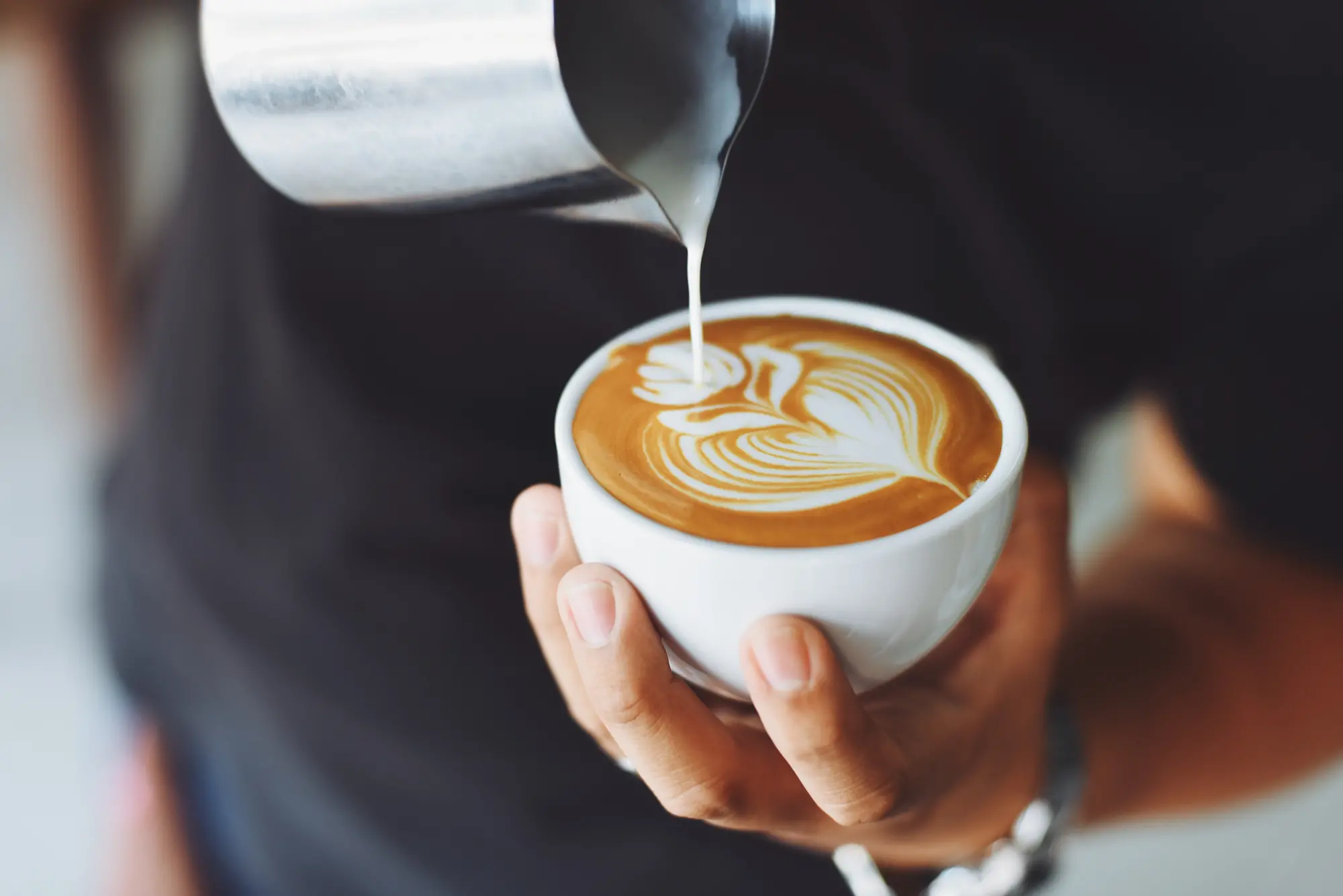The London Coffee Festival takes place this weekend, a mecca for those searching for the perfect cup of caffeine. Whether you like a classic Americano, a powerful espresso-to-go or something frothy and loaded with syrups, the UK now drinks approximately 98 million cups of coffee a day. Café culture has exploded in the past decade, with the coffee industry creating over 210,000 UK jobs, encompassing everything from major high street chains to your local, independent roasters.
However, during this year’s Fairtrade Fortnight, The Fairtrade Foundation warned that everyday essentials including bananas, coffee and cocoa could be at risk of becoming ‘endangered’ due to climate change.
So, just how environmentally friendly is your mug of joe? We speak to Dr Laura Kirwan, Sustainability Lead here at Nutritics, to find out more…
Where does my coffee come from?
While coffee is grown in over 70 countries around the world, a huge 75% of the coffee we drink comes from just five countries: Brazil, Vietnam, Colombia, Indonesia and Ethiopia. With coffee consumption rising more than 60% since the 1990s, pressure has increased on the environment and the farmers to keep up with demand.
Like many internationally consumed foods, there is less and less variation in the species of coffee grown. Two species currently dominate the industry: Arabica (grown widely in Brazil, Colombia and Ethiopia) and Robusta (Indonesia, Uganda and Vietnam).
The environmental issues with coffee production
Arabica coffee makes up an estimated 60-75% of the world’s coffee production. The plants require shade to grow well, so traditional coffee farms are usually interspersed with trees of various sizes. Robusta, on the other hand, is sturdier and has been developed so that it can grow with more direct sunlight. With demand rising, more and more farmers are switching to the sun-loving Robusta plant to maximise yield. This comes at an environmental cost.
Coffee that is traditionally grown under a canopy of trees not only provides a valuable habitat for local wildlife, but its densely packed landscapes can prevent topsoil erosion and do not require chemical fertilisers.
In contrast, the move to modern ‘sun cultivation’ relies on the use of fertilisers, which can have detrimental effects on local biodiversity. Sun-grown coffee is also more likely to contribute to deforestation in order to clear space for the coffee plants. Without impactful protection at a governmental level, it’s likely that farmers under pressure will continue to turn to higher-yield farming methods as a short term fix. In the longer run though, degraded soil health — combined with the increased threat of droughts and failed crops due to climate change —, could massively reduce the amount of land suitable for growing coffee in the future.
On top of this, water usage is high during the coffee growing and bean washing process. According to the UN Food and Agriculture Organization (2019), it takes 140 litres of water to produce just 125ml of coffee.
The cost to farmers
Another issue is the distribution of wealth within the system. While coffee is in record demand, only 10% of the money generated by the industry is retained by coffee-producing countries like Brazil, Indonesia and Vietnam. The stats are eye-opening. Of the 25 million smallholder farmers who produce 80% of the world’s coffee, studies have found that nearly half live below the international poverty line and more than one-fifth live in extreme poverty. This makes the work of organisations like Fairtrade — who aim to secure a fair deal for farmers around the world — so important.
Do I need to stop drinking coffee?
For consumers and business owners, the above can make for bleak reading. However, it’s important to remember that the environmental impact per cup is relatively low for the drinker, with an average mug of coffee using just two tablespoons of ground coffee beans. It’s the large, global scale of coffee production and the increased pressures put on the land where the impact is felt the hardest.
So, what’s clear is that being more mindful of the type of coffee we consume and its production origins can help to minimise its eco impact.
How to make more sustainable coffee choices
However, there are some choices you can make to lessen the impact of your morning brew. Firstly, look to certifications to guide you on responsibly sourced coffee. The Rainforest Alliance works with farmers to restore ecosystems and improve biodiversity as part of its coffee certification, as well as ensuring the farmers remain productive and resilient for the future. As mentioned earlier, Fairtrade International helps farmers and workers receive a fair price that in turn will enable them to invest in transitioning to sustainable and climate-resilient ways of production.
For café and coffee shops, it can be really beneficial to learn more about the origins of your beans. Not only will this give you confidence in the product you are selling, but also enable you and your staff to comfortably answer any questions your customers might have, as well potentially giving you a marketing hook to shout about.
And there are other elements to consider in terms of the overall footprint of your coffee. Choosing a plant-based milk will have less of a climate impact than traditional dairy, and if you’re grabbing a coffee on the move, don’t forget to bring a reusable mug. Cafés should encourage and remind customers to bring a reusable mug where possible to reduce the use of single-use, often unrecyclable cups.
Foodprint from Nutritics can also help you to identify the carbon and water usage of the coffee bought for your business, giving you the information to look at less impactful coffees to use on your menu and help consumers make a greener choice. For example, According to the SuEatable LIFE database (2023), an espresso has a low carbon footprint of 0.06kg C02eq per 100g and a weak coffee has a water foodprint of 80L per 100g.
